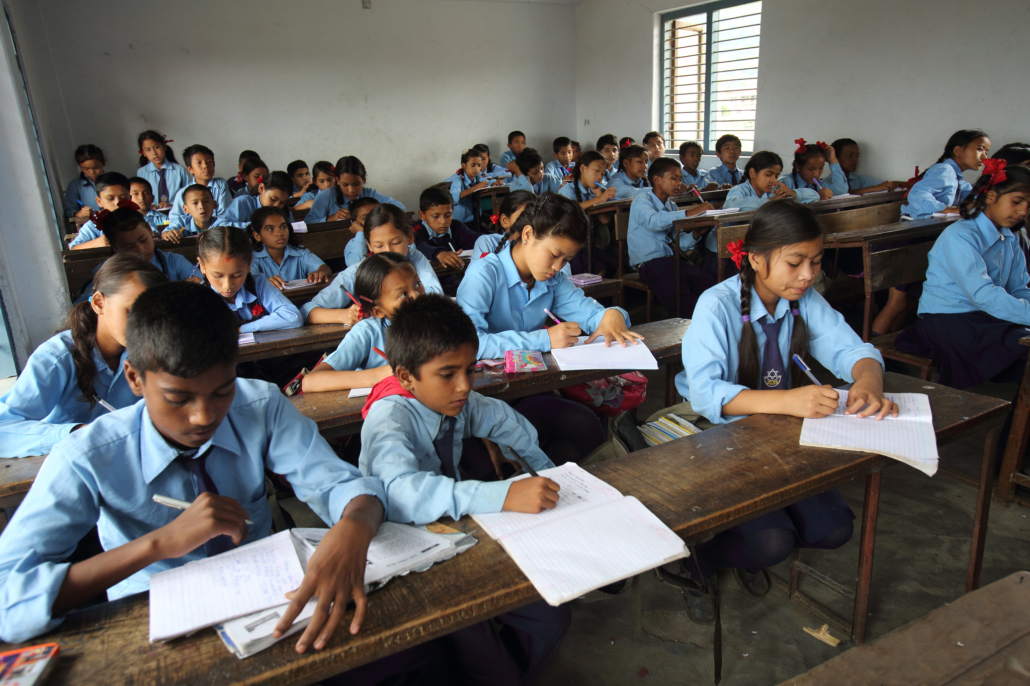The Relationship Between Education and Poverty
 There is a distinct relationship between education and poverty. Countries with inadequate education lead to a greater number of people in poverty. The Borgen Project had the opportunity to speak with the International Affairs and Outreach Director at the University of Wisconsin-Milwaukee, A. Aneesh. Aneesh is also a sociology and global studies professor at UWM.
There is a distinct relationship between education and poverty. Countries with inadequate education lead to a greater number of people in poverty. The Borgen Project had the opportunity to speak with the International Affairs and Outreach Director at the University of Wisconsin-Milwaukee, A. Aneesh. Aneesh is also a sociology and global studies professor at UWM.
Data on the Relationship Between Education and Poverty
If every adult received two or more years of education or completed secondary school, it could alleviate 60 million people from poverty, according to a study conducted by UNESCO. If everyone in school left school at basic reading levels, 171 million people could rise out of poverty. Educated people earn 10 percent more for every year they attend school. If everyone received the same schooling, poverty would decrease by 39 percent and there would be less inequality in the world.
According to Aneesh, the main cause of low levels of education is predicated on how highly valued and prioritized education is in societies. For example, places in developing countries may value farming over getting an education. Their families rely on farming to provide money, so it is what they value the most. Consequently, it is more important for them and their children to be working instead of taking the time for education. This is just one example of the relationship between education and poverty.
The United Nations also believes education needs to be prioritized in vulnerable areas. For instance, one of its top sustainable development goals is to mobilize countries to make education a priority. Fortunately, the U.N. made progress on the goal in 2016 when the participation rate in primary education had risen up to 70 percent. However, there’s room for improvement. Only 34 percent of primary schools in the world’s least-developed countries had electricity in 2016.
Opportunities Stem from Education
Aneesh said in his interview that “the kids and the teachers can’t be blamed. The issue is something larger. Society is the issue.” When suffering from poverty, things like education cannot be prioritized. Unfortunately, those with a basic education are offered benefits that the under-educated simply do not have.
Highly-educated people are offered many benefits such as dual citizenship. Both education and capital create a new transnational form of citizenship. The people that move abroad for jobs after receiving adequate education often return to their home countries and invest back into them. These opportunities are not offered to impoverished people. They are unable to improve themselves or their countries.
The Danger of Overprioritization
The way society handles education is another problem in the relationship between education and poverty. “School is the pivotal institution for our society,” said Aneesh. “We’re at a point where there’s no value for people who have no education.” Ultimately, society is the root of the problem of the relationship between education and poverty. It’s a macro issue, not just a problem among certain communities or areas. Society as a whole needs to change in order to alleviate impoverished people from receiving inadequate or no education.
The pendulum swings both ways. For one example of how society can influence priorities in education, Aneesh explained that this can involve too much stress, competition and pressure. For example, in China, parents suffer from “education fever.” Families must choose to pay for their child’s education or other costly things, and they most often choose education. They make this choice even if something else may be a necessity such as medicine for an ill family member.
To improve this problem, society must convince families that education is a priority and must be held at value, but not to such an extreme degree. “Education isn’t only about intelligence,” said Aneesh. “Intelligence is overrated, discipline, not so much. It’s about dealing with the environment. Awareness through education is an important ingredient.” Putting too much priority on education can create an unhealthy environment.
To resolve this issue, societies need to work to instill the value of an education in its citizens. Certainly, it needs to be a priority. Education is a solution to poverty, but it can’t function properly with societal setbacks, which is why it is so important to understand the relationship between education and poverty.
-Jodie Filenius
Photo: Flickr
